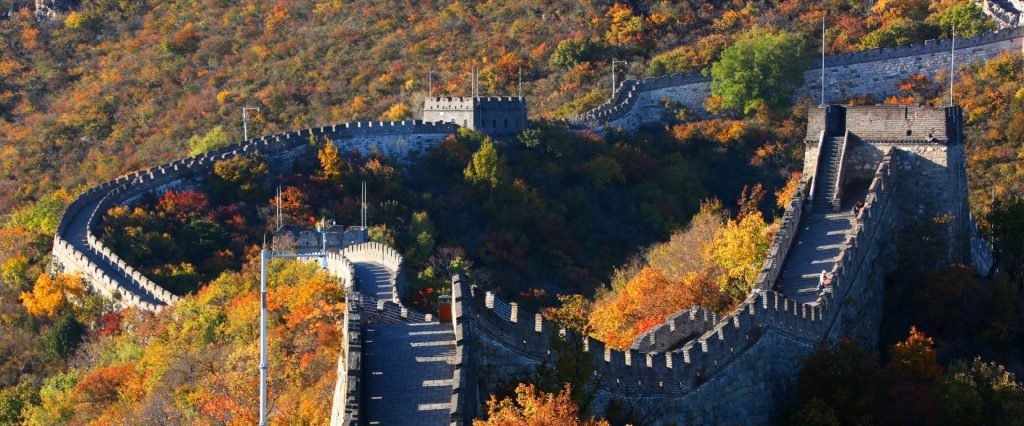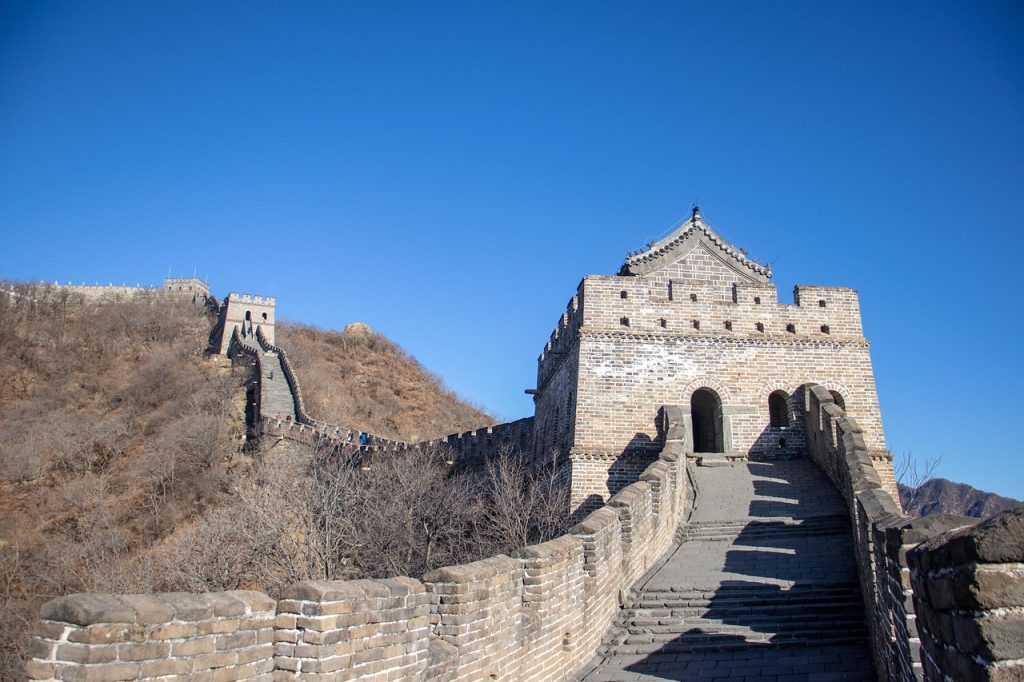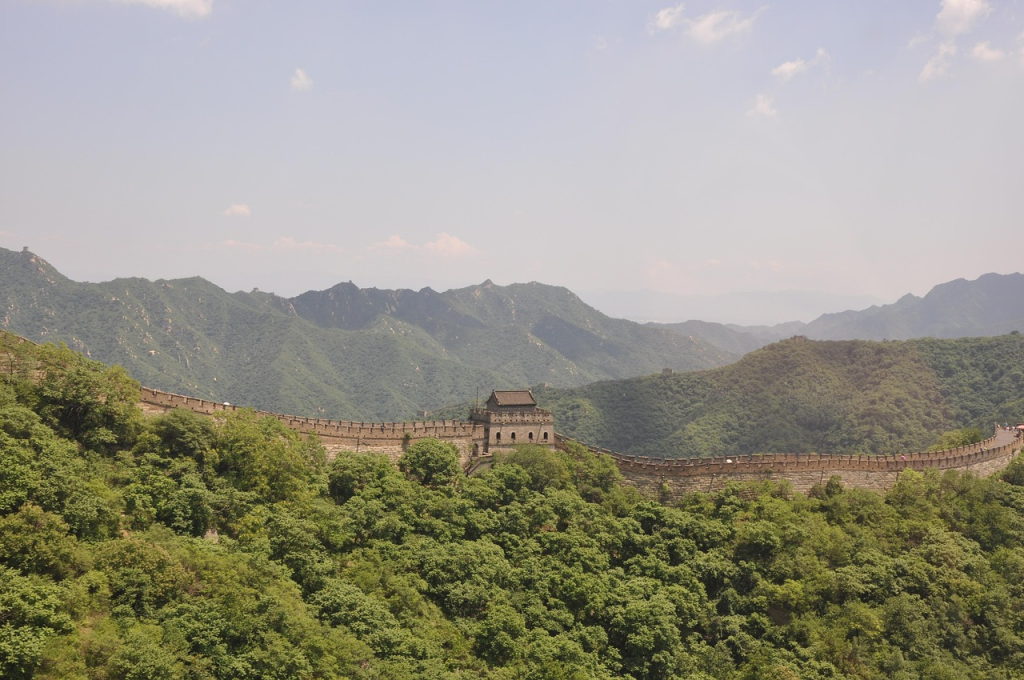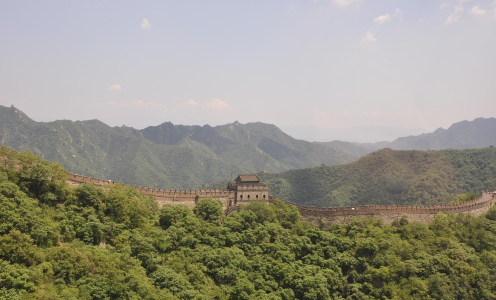Less traveled is a better road. Without the masses of people, there are areas of this magnificent construction where one can really relate with its beauty and history. Parts where you could feel the sun on your face, hear the wind whistling through the old stones, and feel the unadulterated Wall spirit. These are the locations where the whispers of emperors and soldiers still linger in the air, where the sheer scope of human effort leaves you breathless, and where the natural world opens out before you in all its glory. Already eager to find them? Let us travel to discover the Great Wall’s peaceful center. This is experiencing the Wall, not only about seeing it.
Making Smart Choices: More Than Just a Location
Discovering your own Great Wall serenity slice calls both some preparation and reflection. It goes beyond just choosing a haphazard point on the map and wishing for the best. Many elements are involved, thus careful consideration of them will improve your experience tremendously.
Start with accessibility. From Beijing, or another big city, how far are you ready to travel? Some areas are a reasonably easy day trip reachable by public transportation or a quick taxi trip. Some call for more dedication, maybe including an overnight stay in a nearby town. Think on your time limits and your degree of comfort with longer trips. Do you want the ease of a private car or are you content to negotiate local buses and trains?
Then think about the difficulty. Are you an experienced hiker searching for a demanding path that will try your endurance and stamina? Alternatively are you looking for a more relaxed walk, maybe with a cable car to help with the steeper sections? The topography of the Wall changes greatly. Some areas are exquisitely restored with handrails, smooth paths, even those previously mentioned cable cars. Others are wild and crumbling and call for endurance, good balance, and a reasonable dose of adventurous spirit. Tell yourself straight forwardly about your degree of fitness and risk tolerance. Choosing a less difficult section does not bring any shame; the views are still amazing!
At last, give some thought to your intended amenities—or lack thereof. Given limited access to food vendors, restrooms, and other conveniences, are you at ease “roughing it”? Alternatively do you want a more convenient experience with easily accessible facilities? Although they have less facilities, more remote parts of the Wall provide a stronger feeling of solitude. Though they draw more people, the more popular sections provide convenience.

Jiankou: Where the Adventrous Hikers and the Wild Things Are
Jiankou is calling your name if you yearn for raw, wild beauty and are not mindful of a little challenge—in fact, you enjoy challenges. Often referred to as the “wild” Great Wall, this part is really accurate. With crumbling walls, loose stones, and steep slopes that will challenge even the most experienced hikers, it is essentially unspoiled, a magnificent ruin. Think dramatic, almost vertical climbs that will leave your legs burning and your lungs gasping, and amazing, panoramic views that will make you feel as though you are on top of the world – in a sense you are.
Jiankou is not for the unprepared, the casual stroller, or the timid. Strong hiking boots with great ankle support, lots of water to fight dehydration, and a decent degree of fitness above a daily stroll in the park will be vital. Still, the benefits are great and much exceed the work involved. Imagine standing on a watchtower untouched by contemporary restoration efforts in centuries and feeling the ghosts of Ming Dynasty soldiers your only friends all around you. Imagine yourself hurrying up a nearly vertical section called the “Stairway to Heaven,” or “Zhengbeilou,” your heart thumping with effort and exhilaration, the wind whirling around you, the views extending with every upward step. This is a visceral, unforgettable experience more than just a climb.
Negotiating Jiankou’s Difficulties (Because They Are Difficulties):
Be ready; this cannot be emphasized how serious this is not a leisure walk. Wear suitable hiking gear to fit changing weather: strong boots, moisture-wicking clothes, layers to adjust. To help you climb, pack lots of water—more than you would think you would need—and energizing snacks. Protection from the sun calls for a hat, sunscreen, and sunglasses.
While experienced and very well-prepared hikers can negotiate Jiankou alone, a local guide will greatly improve your experience and, more importantly, guarantee your safety. They are familiar with the best paths, the little treasures, the possible dangers, and the local past. They also offer insightful analysis of the culture and surroundings and help you negotiate any language obstacles.
Check the weather; mountain conditions can change quickly and cause one to be ready to alter plans. Knowing the forecast will help you to be ready to postpone your climb should bad weather be expected. Strong winds, rain, fog can all make Jiankou dangerous.
Start early; avoid rushing and give yourself enough time to explore and find magic in sunrise. Early morning light is also ideal for photography since it creates long shadows and accentuates the textures of the old stones. You will also beat the (albeit tiny) throngs.
Leave no traces. Pack out all you own; avoid drawing or leaving any marks on the wall. Just snap pictures here.
Gubeikou: Histories Whispers on the Wind (and Through the Crumbling Stones)
Usually less crowded than the more well-known sections like Badaling or Mutianyu, Gubeikou presents a remarkable mix of history and natural beauty. Witnessing many battles and acting as a vital gateway between the northern plains and the heart of the empire, this area was strategically important throughout Chinese history.
Along Gubeikou, you will come across physical relics of its military past: imposing watchtowers, strong fortresses, even portions of the wall still bearing marks of conflict, bullet holes from long-ago skirmishes. The amazing views span undulating hills and valleys, so highlighting the enormity of the Chinese terrain and the strategic significance of this site. Almost as you could picture the troops marching over these hills, swords clashing, battle cries.
Discovering the Charms (and Quiet Majesty) of Gubeikou:

Accessibility: Usually needing a 2–3 hour drive, Gubeikou is a bit further from Beijing than some other areas. Though an overnight stay in a nearby town lets for a more laid-back experience and the chance to explore the surrounding area, it is still accessible as a day trip.
Hiking Conditions: The ground is varied; some wilder, unrestored areas call for more caution and effort while some restored areas provide simpler walking conditions. Though still requires a reasonable degree of fitness and a decent pair of hiking boots, it’s usually less difficult than Jiankou.
Before your trip, spend some time learning about Gubeikou’s rich past. Immmerse yourself. It will give your experience more complexity and significance, turning a picturesque climb into a trip across time. Think about touring the Gubeikou Great Wall Museum or researching the conflicts waged here.
Bring your camera! Panoramic vistas (bring extra batteries and your camera). Particularly at sunrise and sunset, when the light renders the scene in golden tones, the views from Gubeikou are absolutely amazing. You should not be surprised if you find yourself stopping every few minutes to capture still another breathtaking view.
Discover the Villages: Rural Chinese life is glimpsed in the villages surrounding Gubeikou. Think about spending some time discovering them and chatting with the residents.
Jinshanling: Restored and Wild, Beauty and Challenge—the Perfect Balance
Often considered as one of the most beautiful parts of the Great Wall, Jinshanling achieves an amazing mix between accessibility and peace. Offering something for every kind of hiker, from the casual walker to the experienced adventurer, it combines restored and unrestored sections.
Comfortable and safe experience is offered by the well-maintaining, easily navigable restored portions. Still, the undiscovered sections offer a more difficult and exciting look into the Wall’s natural, tough condition. For families, groups with different degrees of fitness, and anyone who wants a taste of both worlds, Jinshanling is a great choice because of its variety and the ease of restoration as well as the raw beauty of the wild Wall.
Highlights of Jinshanling (get ready to be wowed):
Jinshanling is known for its breathtaking scenery, with watchtowers atop undulating hills and the wall slinking across the terrain like a stone dragon. Postcard-perfect Views The landscape is always shifting and presents fresh angles and amazing views around every turn.
Choose your own adventure and decide whether to follow the rebuilt areas for a more pleasant climb, appreciating the smooth paths and well-maintaining steps. If you’re feeling daring, you can explore the unspoiled areas by scrambling over crumbling walls and negotiating uneven ground.
Jinshanling is a photographer’s dream because of the varied architecture of the watchtowers, the dramatic landscapes, and the way light and shadow play. Golden Hour is Your Friend. To catch the golden hour light, when the wall radiates a warm, magical glow, be sure you arrive early or stay late. 📸
Jinshanling is more popular than Jiankou or Gubeikou, but it’s still rather less crowded than sections like Badaling or Mutianyu, particularly if you visit during the week or during the off-season.
Simatai: One Night Under the Stars and Above the Wall
Simatai presents a very unusual Great Wall experience: night hiking is possible. Showcasing some of the most delicate and well-preserved brickwork on the entire Wall, this part is renowned for its breathtaking scenery, difficult climbs, and exquisitely maintained watchtowers. But the nighttime experience pushes it to a whole other level, turning the known terrain into something magical and otherworldly.
Imagine strolling along the lit wall, the stars glittering above you, a great swath of darkness broken only by the faint glow of far-off towns. The sounds of nature—the chirping of crickets, the rustling of leaves, the odd hoot of an owl—break the quiet. Long after you have left, this enchanted, unforgettable experience will linger in your mind like the constellations above.
Organizing Your Simatai Adventure—Day or Night—Very Beautiful
Simatai is one of the few officially open Great Wall sections for night hiking—a singular and unforgettable experience. Book your tickets ahead of time; numbers are limited to guarantee a quiet and safe experience. The illuminated wall highlights the architectural features and the surrounding landscape, so producing a dramatic and ethereal mood.
Beautiful Views (Day and Night): Simatai is worth seeing during the day even if you decide against the night hike. The wall winds along steep ridges and provides panoramic views of the surrounding mountains and valleys, so presenting amazing views.
Simatai is renowned for its steep sections, including the well-known “Fairy Tower” and “Sky Bridge,” which call for a decent degree of fitness and a head for heights. Be ready for a workout. These difficult parts, though, provide the most satisfying perspectives.
Simatai is near Gubei Water Town, a little replica of a classic Chinese water town with canals, bridges, and traditional architecture. Think about combining your Great Wall trip with a town stroll, dining at a nearby restaurant, or boat trip down the canals.
Huanghuacheng: Where Serenity Meets Adventure and the Wall Meets the Water
Huanghuacheng presents a distinctive take on the usual Great Wall experience: it’s a section where the wall actually bends into a lake. Unlike any other section, this produces an amazing visual effect whereby the ancient stone structure seems to be rising from and sinking into the water, so attesting to both human engineering and the might of nature. This is a quite remarkable sight, a calm yet dramatic mix of natural beauty and history. 🌊
Apart from its rather simple hiking (in comparison to Jiankou or Simatai!), and its special chances for water sports, Huanghuacheng is renowned for its stunning surroundings. Combining your hike with a boat ride on the lake provides a whole other viewpoint on the Wall, or you could try kayaking or paddleboarding to get up close and personal with the submerged portions.
The Special Attractiveness of Huanghuacheng (More Than Just a Wall)
Lakeside Location (A Photographer’s Dream: You won’t find anywhere else a singular and dramatic visual like the Great Wall buried in the lake. Photographers have a great chance to get some quite unusual views.
Families, less experienced hikers, and those seeking a less demanding experience will find Huanghuacheng a great choice. Accessible for many With some well-maintaining paths, the terrain is usually less difficult than other areas.
Water Activities: Plan some aquatic fun to go along with your Great Wall visit. Rent a boat, kayak, or paddleboard and explore the lake to see the Wall from below in a different angle.
Though not as far as Jiankou or Gubeikou, Huanghuacheng is usually less crowded than the more well-liked areas like Badaling or Mutianyu, so providing a more peaceful and immersive experience.
Known for its chestnut gardens and rich vegetation, Huanghuacheng is a fantastic spot to see flowers and trees, particularly in the spring and autumn. The historical value of the Wall is matched by the natural beauty.
Mutianyu: Discovering the Silent Moments—even in a Popular Spot
For good reason, Mutianyu is among the most often visited and well-preserved sections of the Great Wall. From Beijing, it’s easily reachable; it’s well kept, provides a safe and pleasant hiking path, and presents amazing views of the nearby mountains and valleys. Still, among the possible throngs, can you find silence there? Correct!
The secret is to go during off-peak and to approach with strategy. If at all possible avoid weekends and Chinese holidays. Arriving early in the morning, before the tour buses start to roll in, or later in the afternoon when the throngs start to thin out, For mild temperature and less tourists, think about visiting during the shoulder seasons—spring and autumn.
Mutianyu’s benefits—even with possible crowds—are worth it.
Mutianyu is in great condition, thus even for those with limited mobility or young children, walking and exploring are simple activities. The paths are level; in steeper portions there are handrails.
Beautiful Views (Classic Great Wall Scenery): The wall winds across over dramatic mountain ridges and through verdant forests. You have seen innumerable pictures and movies featuring this classic Great Wall image.
Accessibility: Mutianyu is a handy choice for a day trip since public transportation (bus) or private car/taxi easily gets her from Beijing.
Facilities (Comfort and Convenience): Mutianyu boasts restaurants, stores, and bathrooms, so providing a pleasant choice for guests who would want easily accessible facilities.
For those who want to avoid the steep climb (or just want a fun experience), there’s a cable car to take you up to the wall, and an exciting Toboggan ride to take you down. Families with children especially find great popularity in this choice.
Getting Ready for Your Trip: Beyond the Foundations
Whether you decide to visit any part of the Great Wall, careful planning is essential, particularly if you’re straying from the path and investigating the less busy, more remote areas. It’s not only about having the correct tools; it’s also about guaranteeing your comfort and safety and being ready for any possibility.
Essential Tools (a Comprehensive List)

For negotiating uneven terrain, loose stones, and steep hills, sturdy hiking boots—with ankle support—are absolutely vital. Choose boots with a strong grip and great ankle support. Before your climb, break them in to prevent blisters.
To carry water, snacks, sunscreen, extra layers of clothes, a first-aid kit, and any other basics, a comfortable and appropriately sized backpack is Choose a backpack with movable straps and comfort for long stretches of wear.
Especially on longer walks and in warmer conditions, staying hydrated is vital and can be achieved with water bottles or hydration packs. Carry more water than you would believe you would need. Like a Camel-Bak, a hydration pack lets you sip hands-free.
Energy bars, trail mix, dried fruit, nuts – anything to maintain your energy levels and ward against tiredness – snacks (High-Energy Fuel). Steer clear of sweet delicacies that might cause a crash.
Sunscreen (High SPF is advised): Even on cloudy days, higher altitudes can have strong sun. Use sunscreen liberally and often.
Hat (Wide-Brimmed for Maximum Protection): Helps control body temperature and shields your head from the sun. Your face and neck will be most protected from a wide-brimmed hat.
Particularly at higher altitudes, sunglasses (protect your eyes from the glare) are absolutely vital. Select sunglasses with UV protection.
Layers of Clothing (Be Ready for Changing Conditions): Mountains’ fast changing climate can affect your wardrobe. Wear easily added or removed layers of clothing to be ready for both warm and cool conditions. The best are moisture-wicking fabrics.
Band-aids, antiseptic wipes, painkillers, blister treatment, any personal medication, insect repellent – just in case – make up first-aid kit, comprehensive and well-stocked. Before your trip, become familiar with the contents of your pack.
If you’re hiking alone, particularly on less-traveled areas, it’s crucial to know where you’re headed. Map and Compass—or GPS Device Essential are a map and compass; a GPS device can be a good backup. Discover how to make use of them before your trip.
Essential for Night Hikes or Unexpected Delays: Should you be planning a night hike at Simatai or should you find yourself out after dark? A headlamp or flashlight is therefore quite important. As it frees your hands, a headlamp is better.
Make sure your phone and other gadgets would be charged with a portable charger.
Phone for emergency communication either with a local SIM card or roaming enabled. One reasonably cheap solution is a local SIM card.
Whistle: To carry about for an emergency.
Little cash for tipping and minor purchases.

Safety Advice (give your well-being top priority):
Safety in Numbers: Hiking with a buddy is always safer—especially on more isolated parts. Should an emergency strike, you can assist one another.
Tell someone your plans; let them know where you are going, which part of the Wall you will be hiking, and when you hope to be back. This is absolutely a safety measure.
Particularly in wilder areas where the terrain may be dangerous, stay on the marked trails and avoid straying from them.
Look out for loose stones, steep drops, uneven surfaces, and other possible hazards in your surrounds. Take your time and consider your footing.
Listen to Your Body (Don’t Push Yourself Beyond Your Limits): Steer clear of too rigorous self-push. When you need breaks, sip lots of water, and don’t hesitate to turn back if you feel sick or very tired.
Respect the Wall (Preserve It for Future Generations): Refrain from littering, from climbing on unspoiled areas, from any kind of structural damage. We have to treat the historical treasure that is the Great Wall with regard.
Acknowledge wildlife. Although improbable to be harmful, there could be snakes or other animals.


